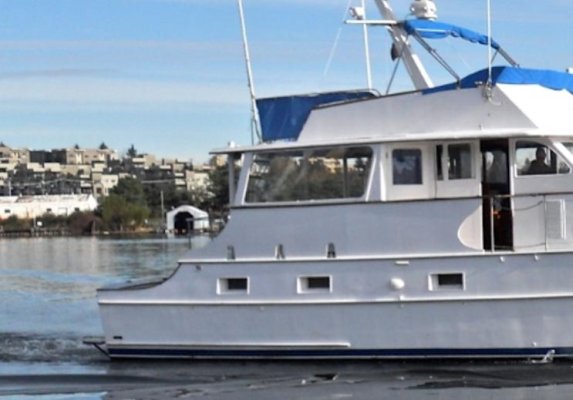I didn't describe my particular example situation as "survival" (because I lived!) but honestly I was scared sh*tless. It was a bad early May. The Strait of Juan de Fuca was wonderful, rounding the Cape and turning left was no issue and I headed about 34 miles offshore to keep lots of sea room. A day later is when it took the turn for the worse. The seas took constant helmsmanship and if I had turned an extra 10-20 degrees then the boat would have broached. 100% no doubt about it.
I kept in contact, checking in, with Coast Guard as I cruised south down the coast. CG kept warning me about trying to cross the various bars to seek shelter, but I couldn't change course anyway since we would have rolled.
Sunchaser, the scuppers were a joke and the teak flooring and the lazarette hatch leaked somewhat. Thank God for the watertight bulkhead and the little electric bilge pump. When I was in the wave's troughs the foaming water always flooded the cockpit as it did with the breaking waves when at the crest. Anyway, there was nothing to be done about it. There was a big picture window looking into the cockpit from the aft stateroom, and before I left I had replaced it with laminated glass. It was like looking into a fishtank from down below.
The funny thing is that the one thing that scared me the most was the thought of getting seasick, since my two crew were not the most experienced sailors. Luckily, to date I have never been seasick in my life.
You PNW boys have got some truly crazy cruising grounds out there! My hats off to you for sailing up and down the coast and living to tell about it.
Regarding forecasts, I honestly don't remember, but I certainly wouldn't have headed out if they were calling for 2 to 3 story seas. I recall crossing an oil tanker who called out to "that little boat rolling in the seas off my starboard" and being asked what the hell I was doing out there. My boat was 65ft and I thought I was a big boy when I bought her!
Nature (and giant tankers) can be quite humbling

PS - I framed some photos I took but they are all in storage back in America. Wish I had scanned some. Makes for great conversations during cocktail parties, haha.



